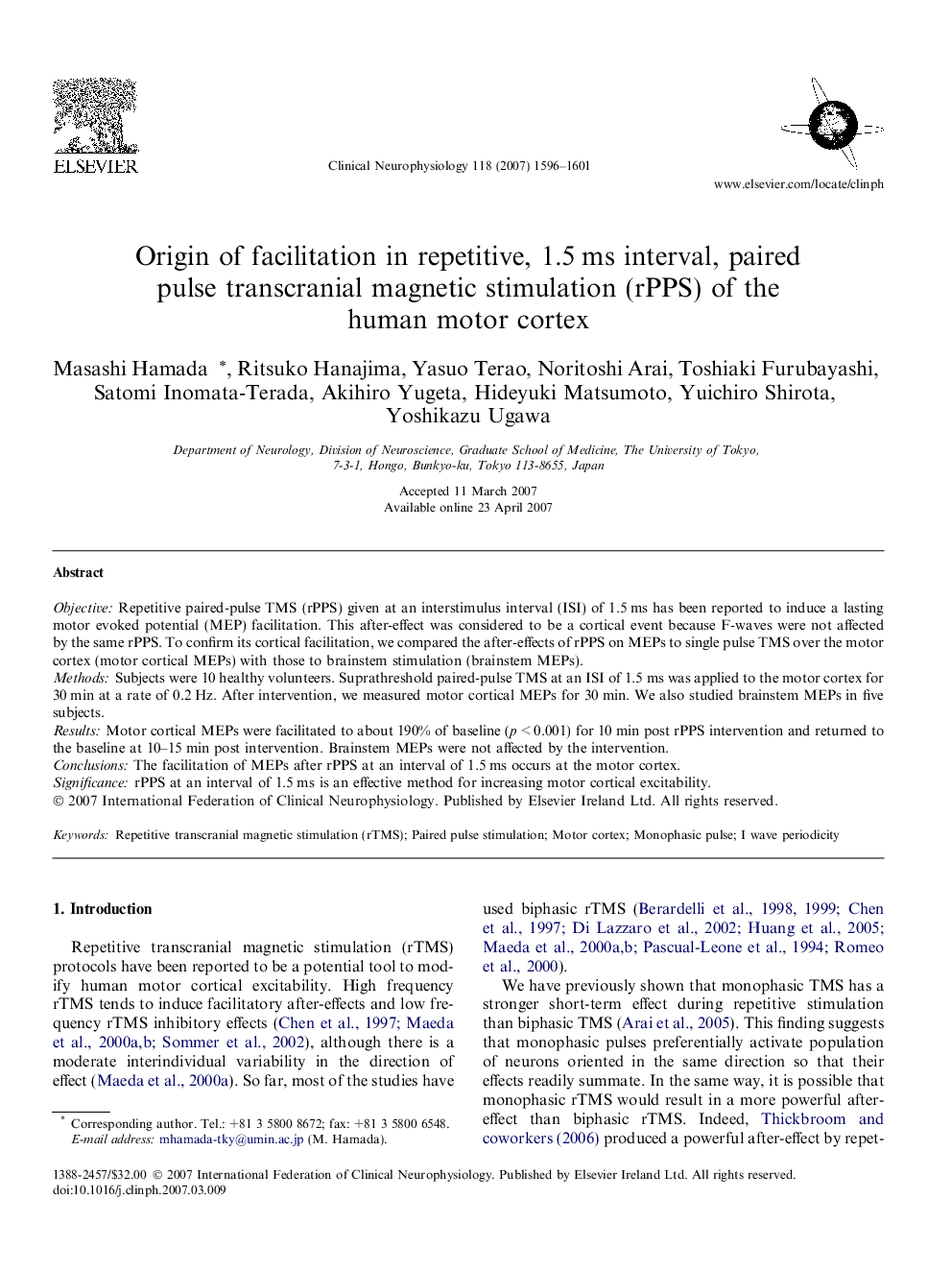| Article ID | Journal | Published Year | Pages | File Type |
|---|---|---|---|---|
| 3047635 | Clinical Neurophysiology | 2007 | 6 Pages |
ObjectiveRepetitive paired-pulse TMS (rPPS) given at an interstimulus interval (ISI) of 1.5 ms has been reported to induce a lasting motor evoked potential (MEP) facilitation. This after-effect was considered to be a cortical event because F-waves were not affected by the same rPPS. To confirm its cortical facilitation, we compared the after-effects of rPPS on MEPs to single pulse TMS over the motor cortex (motor cortical MEPs) with those to brainstem stimulation (brainstem MEPs).MethodsSubjects were 10 healthy volunteers. Suprathreshold paired-pulse TMS at an ISI of 1.5 ms was applied to the motor cortex for 30 min at a rate of 0.2 Hz. After intervention, we measured motor cortical MEPs for 30 min. We also studied brainstem MEPs in five subjects.ResultsMotor cortical MEPs were facilitated to about 190% of baseline (p < 0.001) for 10 min post rPPS intervention and returned to the baseline at 10–15 min post intervention. Brainstem MEPs were not affected by the intervention.ConclusionsThe facilitation of MEPs after rPPS at an interval of 1.5 ms occurs at the motor cortex.SignificancerPPS at an interval of 1.5 ms is an effective method for increasing motor cortical excitability.
